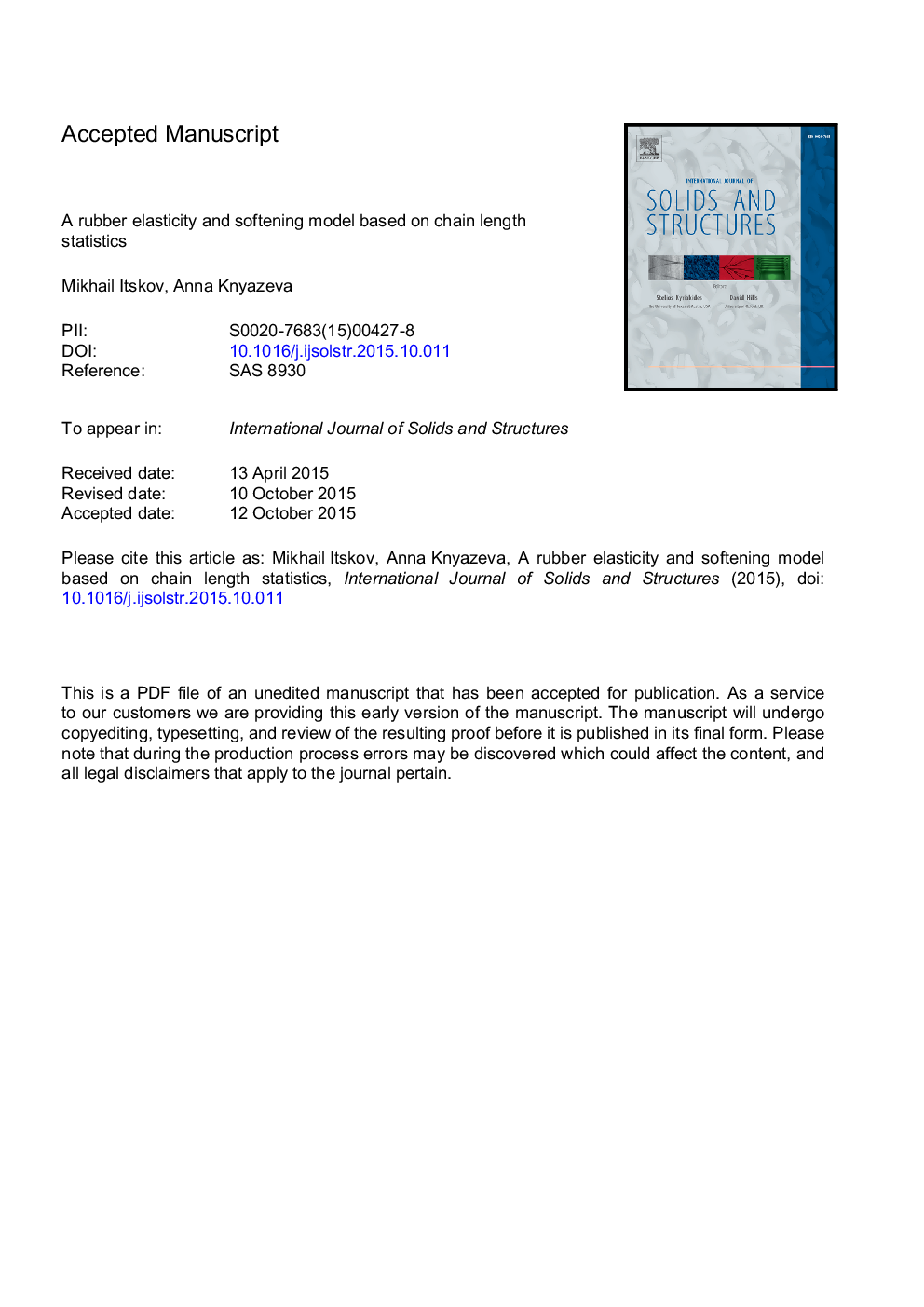| Article ID | Journal | Published Year | Pages | File Type |
|---|---|---|---|---|
| 6748658 | International Journal of Solids and Structures | 2016 | 26 Pages |
Abstract
The classical statistical theory of polymerization predicts a random distribution of polymer chain lengths. This distribution has long ago been known in the polymerization theory but, to the best of our knowledge, has not so far been utilized in mechanics of polymers. In the present paper, we incorporate this chain length statistics into full network rubber models which are based on continuous directional distributions of polymer chains. The free energy of the full network results as an integral of single chain energies over the unit sphere. In the case of an initially isotropic spatial arrangement of chains and ideally elastic behavior an analytical solution in terms of micro-structural parameters of the network is obtained. Introducing a softening criterion formulated in terms of the minimal number of chain segments available in the distribution we can describe not only elastic behavior but also inelastic phenomena especially pronounced in filled rubbers. These are, for example, the Mullins effect, permanent set and strain induced anisotropy. In this case, numerical integration over the unit sphere is applied. Predictions of the model demonstrate good agreement with experimental data with respect to the above mentioned phenomena.
Related Topics
Physical Sciences and Engineering
Engineering
Civil and Structural Engineering
Authors
Mikhail Itskov, Anna Knyazeva,
